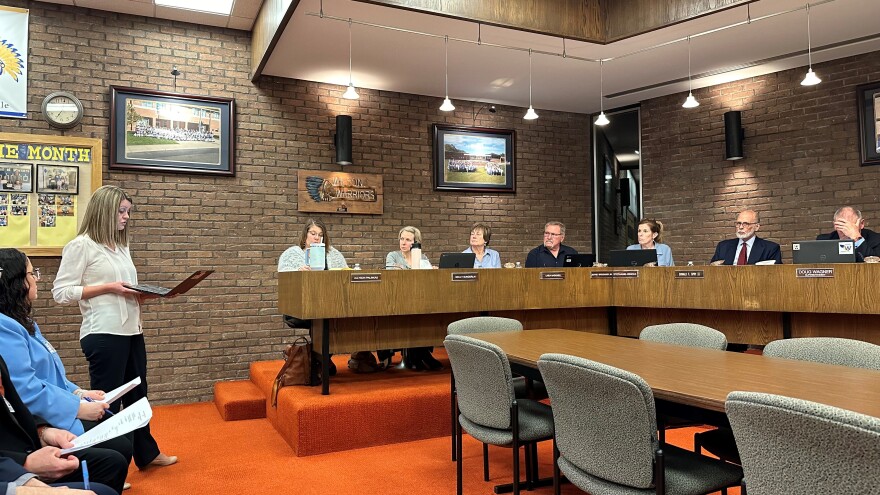WILSON, Pa. — Almost one-fifth of Wilson Area School District students are enrolled in some form of special education, according to the district's updated Special Education Comprehensive Plan 2024-27.
District Special Education Director Laura Samson on Monday provided the Wilson Area School Board a brief review of the plan, saying the data in the report falls within state requirements.
The plan now is up for public review on the district's website, officials said.
According to the district’s Special Education Data Report from the 2022-23 school year, Wilson counted 399 students in special education enrollment out of 2,164 total students.
Data from that report showed “specific learning disability” as the most prevalent listed disability at 35.6% of the special education students.
That's slightly below the state average of 38.3%.
Special education comprehensive plans explore programs and services throughout the district and incorporates program changes as a result of corrective action based on monitoring, improvement planning and other factors.
Following public review, the plan will be voted on by the school board at its April 15 meeting.
Speech impairment, autism
Wilson Area School District currently counts 421 special education students in its total student body of 2,185.
Speech or language impairment was the next most significant disability at 19.5% — slightly above Pennsylvania’s average of 13.9%.
Autism affects 16.5% of Wilson students — again, slightly above the average of 13.2% for the state.
“And we anticipate that will improve over the next few years with these changes."Wilson Area Schools Special Education Director Laura Samson
Samson said her committee is monitoring the number of students that have been identified with speech and language impairments.
“As our data was above the state average in that particular category, our committee discussed professional development that has been provided to our district [speech-language pathologist] along with our evaluation process for our students identified with speech needs," Sampson said.
"And we anticipate that will improve over the next few years with these changes."
Samson also touched on the three-year professional development plan, which covers autism, positive behavior support, transition services, the science of literacy, and paraprofessional and parent training.
'Strategic plan cycle'
Details in the report include analysis of the classrooms in which special education students are taught, numbers and positions of those who work with those students, and information concerning off-site locations in which those students may be educated, such as the Children’s Home of Easton.
According to the state Education Department, the three-year cycle of special education comprehensive plans "corresponds to the school district's strategic plan cycle so that the information in the special education plan can be applied to the school district's strategic plan, especially the professional education and induction programs."
Pennsylvania’s State Senate celebrated a bi-partisan education spending package that touted more than $76 million in special education funding for intermediate units throughout the commonwealth in November 2023.
“Today, the Senate passed a bi-partisan education spending package that helps distressed schools, invests in mental health and safety for students, and provides parents with a greater say in their children’s education,” Senate President Pro Tempore Kim Ward (R, Westmoreland) said.
“This collaborative effort is a great step in the right direction to address some our most important education funding matters.”


